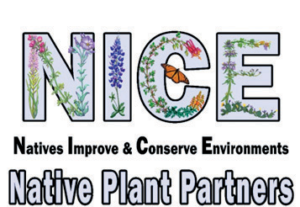Demonstration Gardens
Museum of Handmade Furniture
Located in the heart of the Texas Hill Country, the Museum of Texas Handmade Furniture sits on a beautifully wooded 11 acres in historic New Braunfels. It houses a stunning
Heritage Museum
For the last 20 years, the museum has been trying to protect and preserve over 200 dinosaur footprints and 28 separate trackways. Made approximately 110 million years ago, the footprints
NICE! Native Plant Partners
 The NICE Native Plant Partners program is a collaboration between the Native Plant Society of Texas and local nurseries around the state to offer natives that are right for the local environment. Texas is a large, diverse state and plants that work for one region may not always be the best choice in a different region. Native Plant Partners committees run by our local chapters create a list of Plant of the Month plants (in some areas a Plant of the Season) in cooperation with participating local nurseries and wholesalers in order to assure availability. The Native Plant Society chapter then helps promote the Plant of the Month through its website and newspaper articles, signs at the point of sale and other means. Often an information sheet on the plant is available at the nursery.
The NICE Native Plant Partners program is a collaboration between the Native Plant Society of Texas and local nurseries around the state to offer natives that are right for the local environment. Texas is a large, diverse state and plants that work for one region may not always be the best choice in a different region. Native Plant Partners committees run by our local chapters create a list of Plant of the Month plants (in some areas a Plant of the Season) in cooperation with participating local nurseries and wholesalers in order to assure availability. The Native Plant Society chapter then helps promote the Plant of the Month through its website and newspaper articles, signs at the point of sale and other means. Often an information sheet on the plant is available at the nursery.
Lindheimer Chapter Native Plant Partner Nurseries
Additional NICE Partner Nurseries in Central Texas
Native Landscape Certification Program
Our Native Landscape Certification Program (NLCP) is a series of day-long classes highlighting best practices for native plant landscaping, including wildlife habitat gardening.
Each class consists of an indoor training session and a plant identification session. We show you plants native to the local ecoregion and illustrate their use in the landscape.
In each level you are presented with 45 native Texas plants recommended for your area, and 5 non-native plants to avoid.
Goals of the NLCP classes are to (a) educate NPSOT members and the general public about the value of natives, (b) how to use native plants in home, public and commercial landscapes and habitat restorations, and to (c) provide native landscape education, CEUs, and credentials to landscape professionals, developers, and nature-oriented groups.
- Level 1: Introduction to Native Landscapes – Class & Plant Walk
- Level 2: Design and Development with Native Plants – Class & Plant Walk
- Level 3: Installing and Maintaining Native Landscapes – Class & Plant Walk
- Level 4: Stewardship of Native Plant Communities (under development) – Class & Plant Walk Visit Native Landscape Certification Program


